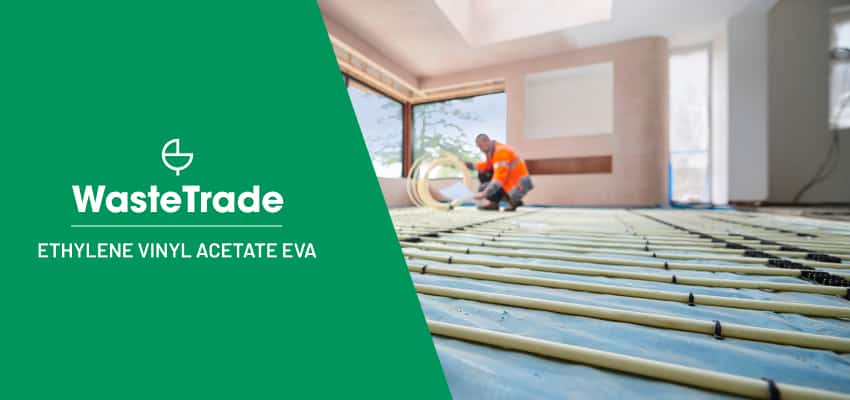Ethylene Vinyl Acetate (EVA) Recycling

EVA Properties

Ethylene Vinyl Acetate (EVA) is a thermoplastic material with unique properties that make it ideal for various applications across industries. EVA is a copolymer of ethylene and vinyl acetate. The proportion of each component can vary, which affects the properties of the final product. The vinyl acetate content typically ranges from 1% to 50%. EVA’s properties include flexibility, toughness, transparency, and resistance to impact, chemicals, and UV radiation. EVA’s flexibility is due to the ethylene content, while the vinyl acetate content enhances its toughness and adhesion properties.
EVA is a versatile material that can be blended with other polymers to enhance its properties. For example, EVA can be blended with polyethylene to increase its flexibility and softness or blended with polystyrene to improve its impact resistance. Blending EVA with other polymers can result in a range of products with different properties and applications.
EVA Applications

EVA has numerous applications across various industries. In the footwear industry, EVA is commonly used to make shoe soles due to its excellent shock absorption properties. EVA can also be used to make other footwear components, such as insoles and straps. In the sports equipment industry, EVA is used to make protective gear, such as helmets and pads, due to its impact resistance properties. EVA is also used in the packaging industry, as it is non-toxic and has excellent transparency.
EVA is used to make food packaging, such as cling film and food bags. In the automotive industry, EVA is used in automotive interiors, such as dashboard covers and floor mats, and as an adhesive in car assembly. EVA is also used in the construction industry as a sealant and adhesive, and as a foam insulator for walls and roofs.
EVA Recyclability
EVA is recyclable and can be processed into new products. The recycling process for EVA is straightforward and involves grinding the material into small pieces, which can then be used to make new products. Recycled EVA can be used to make new footwear, sports equipment, packaging materials, automotive parts, and construction materials.
Recycling EVA can help reduce waste, save resources, and decrease greenhouse gas emissions. Additionally, recycling EVA can help prevent pollution and protect the environment. By recycling EVA, businesses can contribute to a more sustainable future and reduce their carbon footprint. The recycled EVA can be used to make products with similar or different properties, depending on the manufacturing process and the proportion of components in the recycled EVA.
Recycle Ethylene Vinyl Acetate (EVA) With WasteTrade
For businesses searching for a solution to recycle their EVA waste streams, WasteTrade is here to help. WasteTrade acts as a platform that links businesses with waste management firms that have expertise in plastic recycling. By enrolling with WasteTrade, businesses will receive crucial information and resources to gain an understanding of the recycling process and make informed decisions. To discover optimal recycling solutions for your EVA waste streams, sign up with WasteTrade today.
